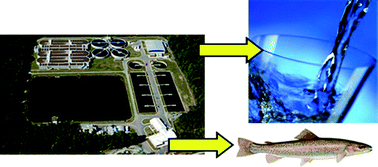Fate and removal of estrogens in municipal wastewater†
Abstract
Natural and synthetic estrogens are some of the most potent

* Corresponding authors
a
Department of Civil and Environmental Engineering, University of Utah, Ste 104, 122 S. Central Campus Drive, Salt Lake City, UT, USA
E-mail:
rgoel@eng.utah.edu
Fax: +1 315 801 585 5477
Tel: +1 315 801 581-6110
Natural and synthetic estrogens are some of the most potent

 Please wait while we load your content...
Something went wrong. Try again?
Please wait while we load your content...
Something went wrong. Try again?
L. Racz and R. K. Goel, J. Environ. Monit., 2010, 12, 58 DOI: 10.1039/B917298J
To request permission to reproduce material from this article, please go to the Copyright Clearance Center request page.
If you are an author contributing to an RSC publication, you do not need to request permission provided correct acknowledgement is given.
If you are the author of this article, you do not need to request permission to reproduce figures and diagrams provided correct acknowledgement is given. If you want to reproduce the whole article in a third-party publication (excluding your thesis/dissertation for which permission is not required) please go to the Copyright Clearance Center request page.
Read more about how to correctly acknowledge RSC content.
 Fetching data from CrossRef.
Fetching data from CrossRef.
This may take some time to load.
Loading related content
